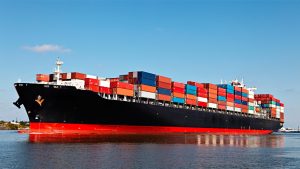You’re contributing to a massive environmental problem if you’re choosing air cargo over sea freight without considering the carbon footprint. Air transport generates 50 times more CO2 emissions per ton-kilometer than maritime shipping, while ocean vessels achieve 90-300 ton-kilometers per liter compared to aviation’s mere 5-15. These aren’t marginal differences—they’re transformational gaps that directly impact your company’s sustainability metrics. The question isn’t whether you should make the switch, but how quickly you can implement it.
Carbon Emissions: The Massive Gap Between Ocean and Air Transport
When comparing transportation methods, sea freight produces approximately 40-50 times fewer carbon emissions per ton-kilometer than air cargo. You’ll find that container ships emit roughly 10-40 grams of CO2 per ton-kilometer, while aircraft generate 500-1,500 grams for identical distances. This dramatic difference stems from fundamental physics: ships move massive cargo volumes efficiently through water resistance, whereas planes must overcome gravity and air resistance continuously. Sea freight shipping leverages economies of scale, carrying 10,000-24,000 TEU containers per vessel. If you’re shipping non-urgent goods, choosing ocean transport dramatically reduces your supply chain’s carbon footprint while maintaining cost-effectiveness.

Fuel Efficiency and Resource Consumption in Maritime Vs Aviation Logistics
Beyond carbon emissions, maritime shipping demonstrates superior fuel efficiency through fundamentally different propulsion requirements and resource utilization patterns. You’ll find that cargo ships achieve 90-300 ton-kilometers per liter of fuel, while aircraft typically manage only 5-15 ton-kilometers per liter. This 20:1 efficiency ratio stems from maritime vessels operating in dense water medium with minimal elevation changes, unlike aircraft fighting gravity and air resistance. Ships also maximize payload-to-vehicle weight ratios of 85-90%, compared to aircraft’s 25-35%. When you choose sea freight, you’re leveraging economies of scale that dramatically reduce per-unit fuel consumption and resource intensity.
Supporting Global Decarbonization Goals Through Strategic Shipping Choices
As global supply chains align with international decarbonization targets, your shipping mode selection directly influences whether organizations meet their Science-Based Targets initiative (SBTi) commitments and contribute to the 1.5°C warming limit outlined in the Paris Agreement. Sea freight generates 3-4 grams CO? per ton-kilometer versus air cargo’s 435-672 grams—a 98% reduction enabling Scope 3 emissions compliance. Companies like IKEA and Unilever’ve achieved 15-20% total emissions reductions by shifting 60% of shipments from air to sea. Your strategic modal choice accelerates industry-wide decarbonization while maintaining supply chain reliability and cost-effectiveness across international trade networks.
Long-Term Environmental Impact of Modal Shift Decisions
While individual shipments create immediate emissions differences, your modal shift decisions compound exponentially over decades through infrastructure development, industry precedent-setting, and ecosystem transformations. When you consistently choose sea freight, you’re driving port modernization investments that reduce terminal energy consumption by 40-60%. Your shipping patterns influence carrier fleet composition decisions, accelerating adoption of wind-assisted propulsion and alternative fuels. Conversely, sustained air cargo demand triggers airport expansions requiring concrete-intensive infrastructure with 50-year carbon payback periods. Maritime-focused logistics networks develop rail connectivity, creating permanent low-carbon corridors. Your accumulated choices reshape supply chain architecture, establishing decarbonized trade routes that benefit multiple industries for generations.